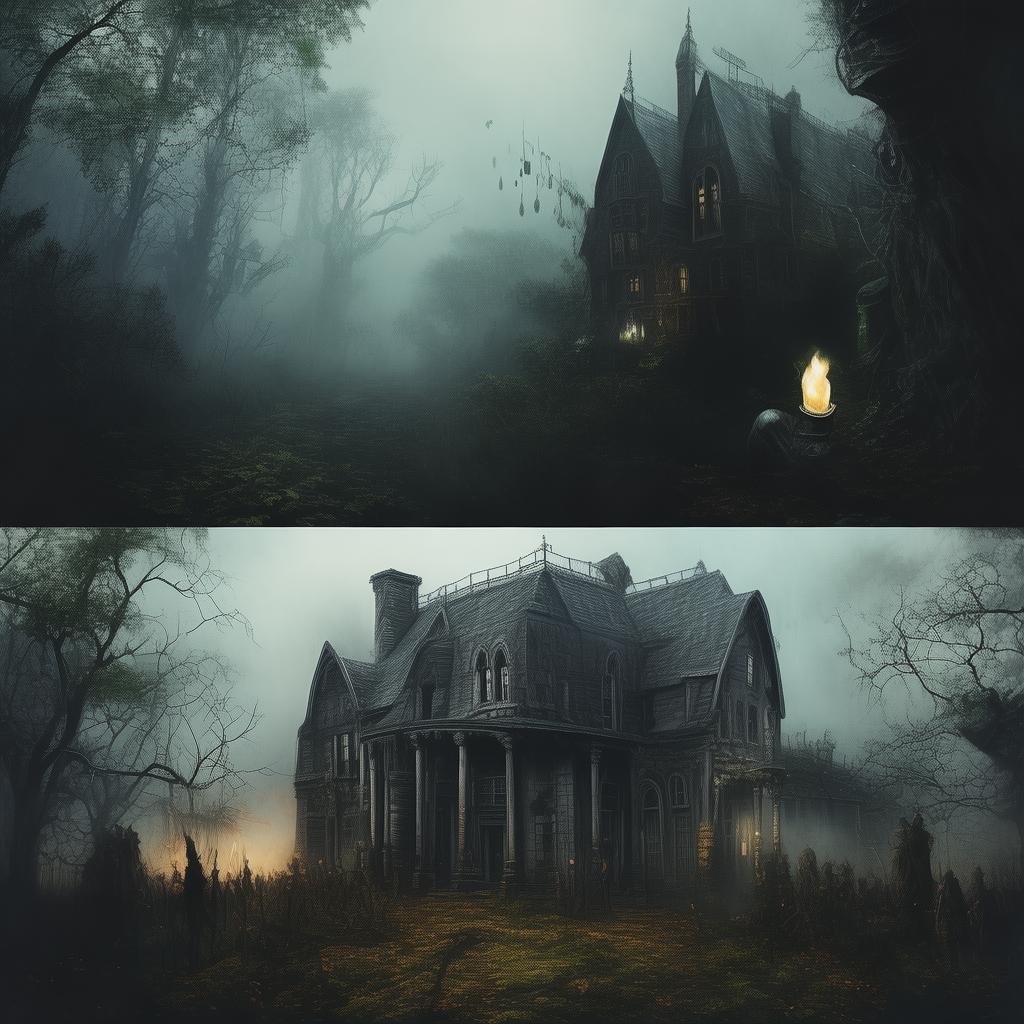Coco's Cryptic Conversations: Ghostly Glimpses
In the heart of the fog-enshrouded coastal town of Seraphim's End, Coco had always been a figure of intrigue. Her reclusive nature, coupled with her hauntingly beautiful paintings, had given her a reputation that was as mysterious as the enigmatic whispers that seemed to follow her wherever she went.
It all began one rainy evening when Coco was sketching the town's lighthouse, a structure that had stood sentinel for generations. As she worked, she felt an inexplicable chill. The brush in her hand seemed to move of its own accord, tracing lines and shapes that Coco couldn't quite understand. The next morning, she found a painting on her easel that depicted a woman in a long, flowing dress, her eyes wide with terror. The title, "The Watcher," was as cryptic as the image itself.
The townsfolk whispered about Coco's paintings, speculating that they were touched by some supernatural force. But Coco dismissed the rumors, attributing the phenomenon to her own subconscious mind. She was an artist, after all, and her paintings were a reflection of her inner world.

One evening, as Coco was working in her studio, she heard a faint voice calling her name. It was a voice she knew well, yet she couldn't place it. She turned, expecting to see her neighbor or perhaps a friend, but the room was empty. The voice grew louder, more insistent, until Coco finally responded, "Who's there?"
A figure appeared in the doorway, cloaked in shadows, their face obscured by the hood of a dark cloak. "Coco," the voice echoed, "I need your help."
The figure stepped forward, and Coco's breath caught in her throat. The woman before her was the subject of her painting, "The Watcher." The woman's eyes were filled with sorrow, and Coco felt a strange connection to her.
"Who are you?" Coco asked, her voice trembling.
"I am your ancestor," the woman replied. "I have been watching over you, waiting for this moment. The paintings you create are capturing my story, my suffering."
Coco's mind raced with questions. How was it possible? How could her paintings capture the spirit of a long-dead ancestor? The woman explained that years ago, she had been accused of witchcraft and thrown into the town's old lighthouse. There, she had been confined, starved, and subjected to unspeakable horrors. Her only solace was to communicate with the outside world through her paintings.
As Coco listened, she realized that the woman's story was not just about her ancestor; it was about the town's dark history, a history that had been buried and forgotten. The woman implored Coco to use her talent to reveal the truth, to expose the injustice that had been done to her and countless others.
Determined to help, Coco began to investigate the town's past. She discovered old diaries, faded photographs, and forgotten tales of witch hunts and executions. The more she learned, the more she realized that her paintings were not just capturing the past; they were channeling the spirits of those who had been wronged.
As Coco's paintings began to attract attention, the town's residents became divided. Some saw her as a savior, a modern-day witch who was revealing their hidden history. Others viewed her as a heretic, a threat to the town's stability.
The climax of Coco's journey came when she unveiled a series of paintings that depicted the final moments of her ancestor and others who had been wronged. The town was shocked, and the authorities were called. Coco was taken into custody, accused of witchcraft herself.
In the courtroom, Coco faced her accusers. She stood firm, her voice steady, as she recounted the story of her ancestor and the town's dark history. The judge, a man who had once been a fervent believer in the witch hunts, was moved by Coco's words.
The judge declared Coco innocent, but not before she had revealed the truth to the town. The residents were forced to confront their past, to acknowledge the wrongs that had been committed. Coco's paintings had become a catalyst for change, a way to heal old wounds and build a better future.
In the end, Coco's paintings had not just captured the ghostly whispers of the past; they had become a beacon of hope for the future. The town of Seraphim's End had been forever changed, and Coco had found her place in history as a hero.
The story of Coco's Cryptic Conversations: Ghostly Glimpses had spread far and wide, sparking discussions and inspiring change. Coco had not only uncovered the truth but had also become a symbol of resilience and hope. Her paintings continued to serve as a reminder that the past could be a powerful force, both haunting and enlightening, if only one were brave enough to confront it.
✨ Original Statement ✨
All articles published on this website (including but not limited to text, images, videos, and other content) are original or authorized for reposting and are protected by relevant laws. Without the explicit written permission of this website, no individual or organization may copy, modify, repost, or use the content for commercial purposes.
If you need to quote or cooperate, please contact this site for authorization. We reserve the right to pursue legal responsibility for any unauthorized use.
Hereby declared.









